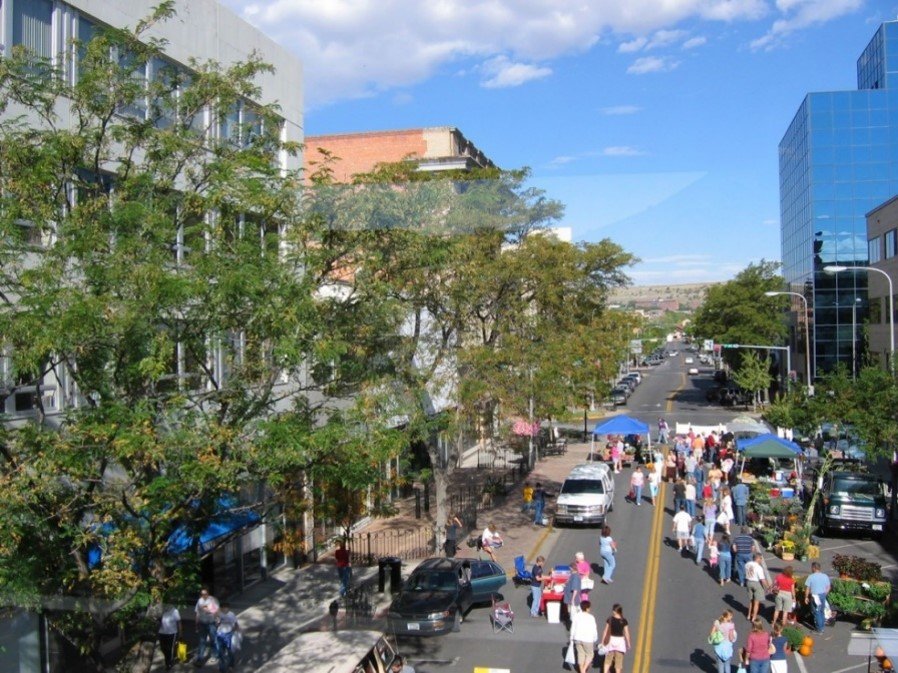What is the Strong Towns Movement?
Pictured above: (L) shows a streetscape where people dominate the use. (R) shows a streetscape where vehicles dominate.
Earlier this year, High Plains Vice President Ed Gulick presented to Billings City Council on the topic of the Strong Towns movement. But what exactly is the Strong Towns movement? Our three-part blog series will explore just that.
Have you ever wondered why the roads are so bad in your community or why it seems all the infrastructure is falling apart at once. One of the reasons might be because of the development pattern your town or city embraced after WWII. That’s when the middle class came into prosperity and started moving to the suburbs. They built new houses farther apart from each other and outside of the main business districts. New roads had to be built, sewer and water systems extended and public safety personnel added to payroll rosters to provide services in these new neighborhoods. With new residences being built, as well as businesses to serve them, cities and towns enjoyed a larger tax base. Short term, it was great. It’s the long-term effects of those past decisions we are struggling with today.
Many of those same cities and towns that experienced exponential growth are now declining. The new development and increased tax base paid for the initial investment, along with other funding the municipality was able to secure. Fast forward to the future and that same tax base is not enough to pay for the maintenance and eventual replacement of the infrastructure that was needed to make the new development a reality.
Cities and towns are experiencing massive backlog maintenance issues. The first life cycle cost structure generally works. It creates positive cash flow. However, when maintenance is needed there often isn’t enough money to cover it so municipalities try to grow more. It’s a cycle that ultimately reaches a point where the growth is not sustainable and the city or town starts to run in the negative. It’s becoming more apparent that the continuous growth cycle isn’t working. It’s time to find a different approach.
The Strong Towns Movement believes it has a better approach. Strong Towns is about getting municipalities to think differently about the relationship between growth and prosperity. It asks cities and towns to gain a better understanding of how growth, particularly low-density growth, can affect town and city finances in the long-term. It requires municipalities to question whether all growth is good growth.
Stay tuned! We will continue to explore this movement throughout the year.


